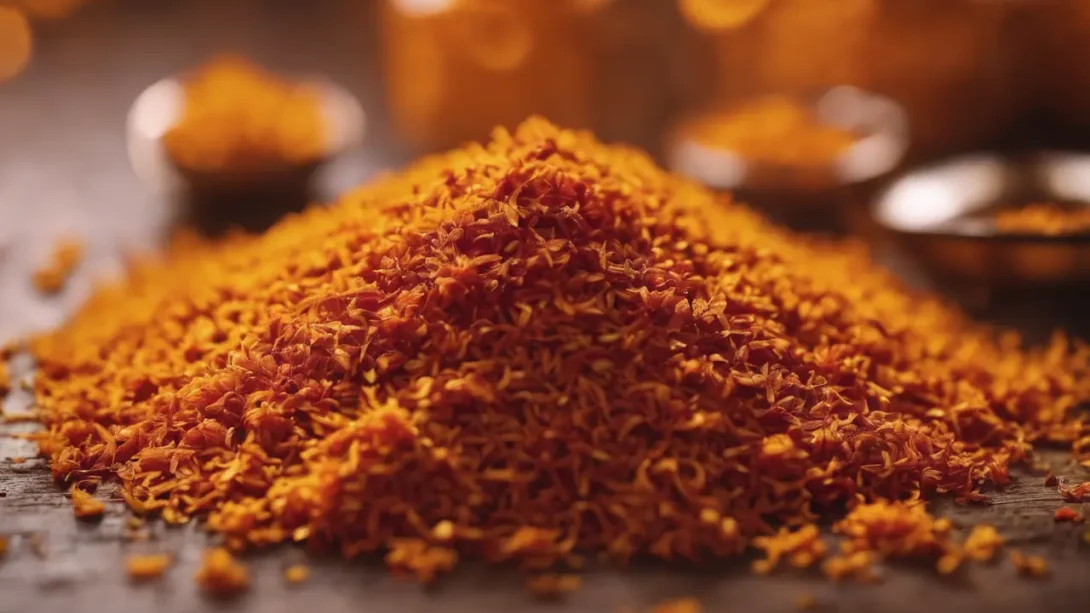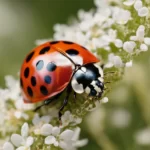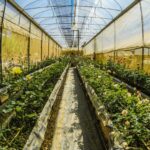Saffron, renowned for its vibrant color, distinctive flavor, and aroma, has graced culinary dishes and traditional medicines for millennia. Derived from the Crocus sativus flower, it’s not just a spice but a luxury, often referred to as “red gold” due to its high price tag. This article delves into the reasons behind saffron’s prestigious status, shedding light on its cultivation, the painstaking labor required for its harvest, and the factors influencing its market value.
The Cultivation of Saffron
The journey of saffron begins with the saffron crocus, a beautiful but delicate flower that blooms once a year. The cultivation of Crocus sativus is a testament to patience and precision, requiring specific climatic conditions—cool dry summers and mild winters. Originating from Greece and the Middle East, saffron cultivation has spread to various parts of the world, including Iran, Spain, and India, each region offering a slight variation in the quality and characteristics of the saffron produced.
The process of growing saffron is as labor-intensive as it is delicate. Each flower, blooming for only a few weeks in autumn, produces three red stigmas, which are the source of the spice. These stigmas must be carefully handpicked in the early morning, before the flowers fully open, to preserve their quality and aroma. It’s this meticulous method of harvesting, combined with the flower’s specific growing requirements, that contributes to saffron’s high cost.
Factors Influencing the Price of Saffron
Labor Costs
The most significant factor in saffron’s price is the labor involved in its harvest. Each stigma is painstakingly collected by hand, a process that demands both time and skill. To gather a pound of saffron, workers must harvest the stigmas from approximately 75,000 flowers, a task that can take hundreds of hours of labor. This intensive manual effort is reflected in the spice’s premium price.
Yield per Flower
The yield per flower of saffron is incredibly low. With each Crocus sativus flower producing only three stigmas, the volume of raw material required for even a small amount of saffron is substantial. This low yield per flower necessitates extensive cultivation to meet even modest production goals, further inflating the cost.
Cultivation Conditions
Saffron’s cultivation is finicky, requiring specific environmental conditions that limit its production to certain regions. The flowers thrive in a continental climate, needing full sun and well-drained soil. These stringent growing conditions restrict the scale and locations of saffron farms, contributing to the spice’s scarcity and high price.
Harvest Season and Timing
The timing of the saffron harvest also plays a crucial role in its cost. The harvest season is brief, typically lasting only a few weeks in late October and early November. The flowers must be collected at dawn, just as they are opening, to ensure the stigmas are undamaged and retain their full aromatic and coloring properties. This narrow window for harvesting requires a significant amount of labor to be mobilized in a short period, further adding to the costs.
Global Production and Market Dynamics
Saffron’s production is a global affair, yet highly concentrated in a few countries, with Iran leading the way, responsible for approximately 90% of the world’s supply. Spain, India, and Greece also contribute significant shares, each with their unique saffron grades and traditions. The geographical concentration of saffron farming is primarily due to the crop’s specific climatic requirements, as well as centuries-old cultivation practices passed down through generations.
The dynamics of the global saffron market are influenced by several factors, including production volumes, export-import policies, and geopolitical tensions. For instance, sanctions or trade restrictions can significantly impact saffron prices, making them fluctuate widely. Additionally, the delicate nature of saffron farming means that climatic anomalies, such as droughts or excessive rainfall, can drastically affect yield, further contributing to price volatility.
The Cost of Saffron: Retail vs. Wholesale
The price of saffron can vary dramatically from the farm gate to the retail shelf. At the wholesale level, prices are influenced by direct negotiations between producers and buyers, often involving large quantities and reflecting the costs of cultivation, harvest, and initial processing. However, once saffron reaches the retail market, additional factors come into play, including packaging, branding, and the distribution network, all of which add layers of cost that contribute to the final retail price.
For consumers, the price of saffron can seem exorbitant, with retail prices significantly higher than wholesale. A pound of saffron might cost anywhere from $500 to over $5,000, depending on the quality, purity, and origin of the spice. This wide range highlights not only the intrinsic value of saffron but also the impact of marketing and consumer perception on its price.
Tips for Purchasing Saffron
Given its high cost, purchasing saffron can be daunting for many consumers. Here are some tips to ensure you get the best value for your money:
- Look for purity: High-quality saffron consists only of the stigma, without any floral waste or other parts of the crocus. The stigmas should be uniformly red, indicating minimal processing and high potency.
- Consider the form: Saffron comes in threads and powdered forms, but threads are generally a safer bet as they are less likely to be adulterated.
- Research the source: Knowing where your saffron comes from can give you insights into its quality. Iranian, Kashmiri, Spanish, and Greek saffrons are among the most prized.
- Check for freshness: Fresh saffron has a strong fragrance and a bright color. Older saffron may lose its potency and thus, its value.
- Be wary of the price: While looking for deals, remember that very low prices might indicate a counterfeit or diluted product. Saffron’s price reflects its labor-intensive harvesting process and rarity.
The Future of Saffron Pricing
As we look towards the future, several factors may influence the price of saffron, ranging from technological advancements in agriculture to shifts in global climate patterns. Innovations in cultivation and harvesting techniques could potentially reduce labor costs and increase yield, making saffron more accessible. For instance, research into more efficient methods of stigma extraction or the development of more resilient saffron crocus varieties could play a significant role in stabilizing prices.
Sustainable farming practices are also gaining traction in the saffron industry. As consumers become more environmentally conscious, there is a growing demand for organically produced saffron, which adheres to eco-friendly cultivation methods. Although organic farming practices may initially be more costly, they offer the potential for long-term sustainability and could lead to a more stable pricing model by reducing dependence on chemical inputs and improving soil health.
The impact of climate change cannot be ignored, as it poses a significant threat to saffron cultivation, which relies on specific climatic conditions. Changes in temperature and precipitation patterns could disrupt traditional saffron farming regions, potentially leading to decreased production and higher prices. However, efforts to adapt cultivation practices to changing climates and to explore new growing regions could mitigate some of these impacts.
Conclusion
Understanding the intricacies behind the cost of saffron sheds light on why this spice is so prized and expensive. From the labor-intensive harvesting process to the impact of global market dynamics, numerous factors contribute to its high price. As consumers, recognizing the value of saffron goes beyond its cost, encompassing the cultural, historical, and agricultural significance of this remarkable spice.
Purchasing saffron is not just buying a cooking ingredient; it’s an investment in a tradition that spans thousands of years. By being informed and mindful about where and how we buy saffron, we support sustainable practices and ensure the continuation of this legacy. As the saffron industry continues to evolve, with advancements in technology and shifts in global agriculture, we may see changes in how saffron is priced. However, its status as a luxury spice is likely to remain, cherished for its unique qualities and the meticulous effort required to bring it from the field to our tables.



